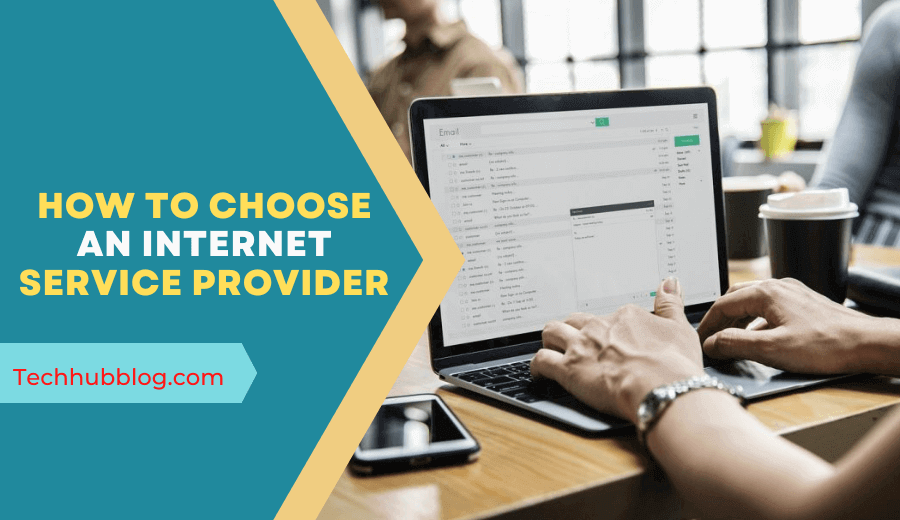Things to Know When Choosing an Internet Provider
Did you know there are currently 2639 internet service providers in the US? That is absolutely too much. All these ISP have their own packages and special deals. It’s enough to make your head spin. I was certainly overwhelmed with all the choices before I finalized on my Spectrum Waco service.
That is where the inspiration for this blog came from. So many of us face the same confusion when it’s time to search for a new provider. But if you keep a few things in mind, it can make your decision making a lot easier.
Know the Types of Broadband
More often than not, people are unaware of the different types of internet connections. you might be familiar with the term ‘Broadband’. It is often used to refer to internet services. But you might not have realized that there are 4 kinds of broadband. There is Cable, DSL, Fiber-Optic, and Satellite. So what’s the difference?
Cable
Cable internet, as the name suggests is delivered to your home through your cable service. Cable internet is the most affordable internet service. And its advertised speeds are high as well, typically advertised above 100 Mbps. We say advertised because the actual speeds often vary based on usage in your area. A cable connection is shared between residents of an area.
DSL
DSL stands for Digital Subscriber Line. And as cable comes through your cable provider, a DSL connection is through your telephone line. Typically DSL connections range around 25 Mbps, but newer connections allow for up to 100 Mbps as well. A common problem with DSL connections is speed. Internet speeds are slower, the further away from the provider you are.
Fiber-Optic
Fiber-Optic connections are also referred to as FiOS. This type of connection is similar to DSL connections except they offer higher speeds. This is a comparatively newer technology and so isn’t available everywhere. But in the places where it is, speeds range up to 500 Mbps or higher. Typically a FiOS connection costs the same as a DSL connection, but with tremendous speed upgrades.
Satellite
As the name suggests, this service is delivered to you directly via satellite service. Most people do not prefer satellite internet for two reasons. The first is that speeds are usually up to 20 Mbps, which makes it considerably slower than alternatives. And the second is that the connection quality can be poorer as well.
So Which Connection is Better?
The question of which broadband connection is better is debatable. But what is not debatable is that satellite broadband is among the least preferred. Only in rural areas where FiOS, DSL, or cable aren’t an option, do people opt for satellite. So unless you specifically want a satellite broadband internet service, your choices are DSL, Cable, or FiOS.
Out of the three remaining choices, the most popular is FiOS. These connections will usually give you the most for your money. In case you live in an area where FiOS isn’t available, then give preference to DSL. If DSL is not available either, then go with cable. But before you select an option, it’s always best to compare.
5 Things to Consider When Selecting an Internet Provider
- Type of Connection
- Availability
- Reliability
- Cost
- Speed
#1. Type of Connection
As discussed above, the type of connection can have a big impact on your internet experience. Satellite internet may feel slow and have interruptions in service. Especially in the windy season. And FiOS might feel faster. That is because data travels faster in a fiber-optic cable than any other. DSL and cable internet typically use coaxial cables which are slower in data transfer than fiber-optic.
#2. Availability
This is the most crucial deciding factor for FiOS service. Since FiOS is still not available throughout the country, you need to check availability. You can find out if FiOS connections are available in your area, by a quick online search. While most areas have DSL and cable availability, some rural areas don’t even have that. In those areas, satellite becomes the only option.
#3. Reliability
Since the internet is such an important tool in our lives, the service provider’s reliability is a big factor. Your service provider needs to be able to give you dependable service. A good way to check the reliability of a service provider is to read reviews online. Research a little on service providers in your area. The online reviews of customers will give you a better idea of the provider’s reliability.
#4. Cost
After reliability, cost is one of the most important factors in determining the right provider for you. This is where you need to shop around. Ask for quotes from different ISPs and compare them. Some might offer you cheaper rates but will limit your usage. Always remember to check if there are any data usage limits on the packages quoted.
#5. Speed
The speeds you need depend on your usage and how many devices you intend on connecting simultaneously. If you just have one computer or mobile device, you might not need higher speeds. But if you have a lot of smart home devices, or expect to, then you might need a faster connection.
Conclusion
Another thing to remember when selecting an ISP is double and triple-play packages. These include cable and voice services along with your internet service.
Double and Triple play bundles usually work out to be cheaper than getting services separately. It’s why I opted for my Spectrum Double Play instead of just the internet service. You can either check online or call different service providers to find the best deals in your area.
